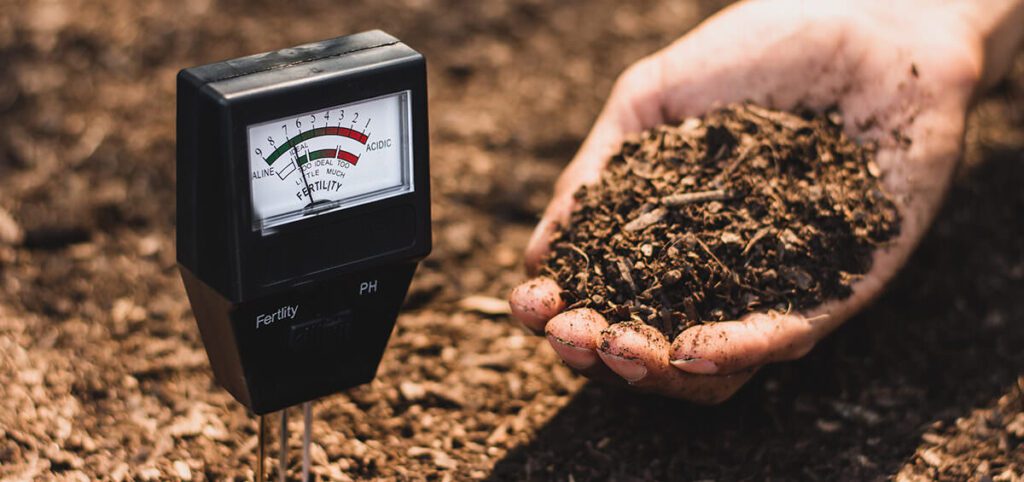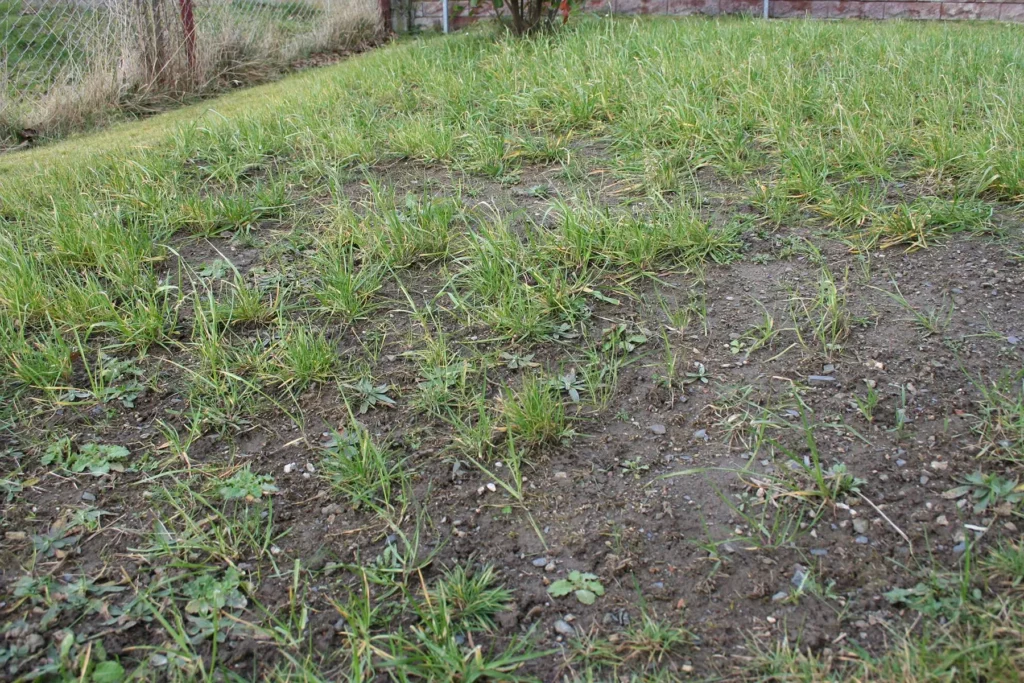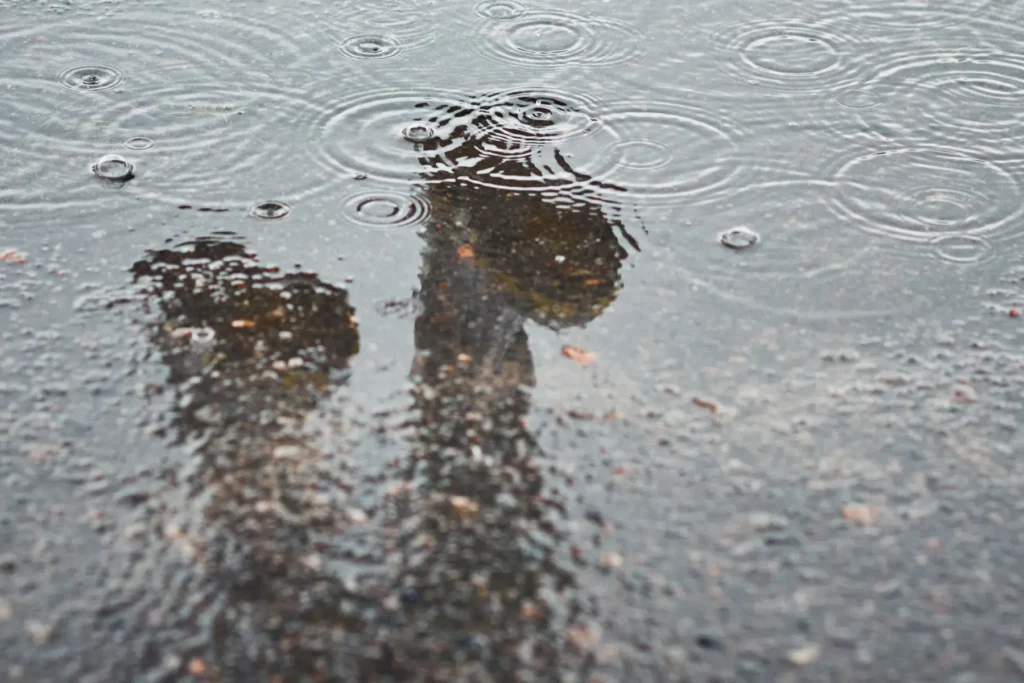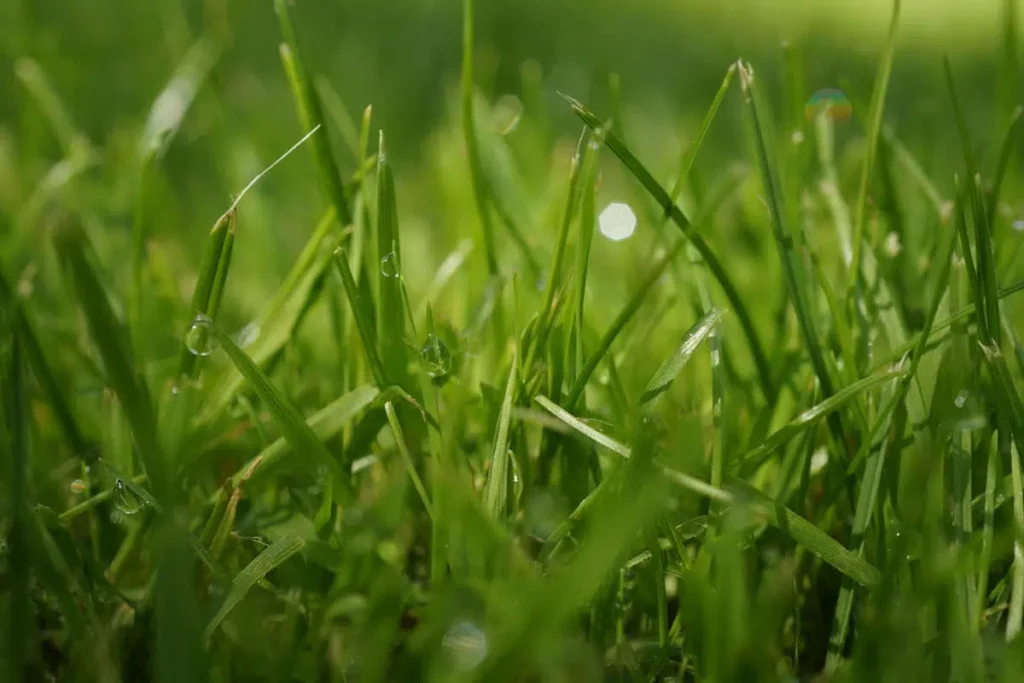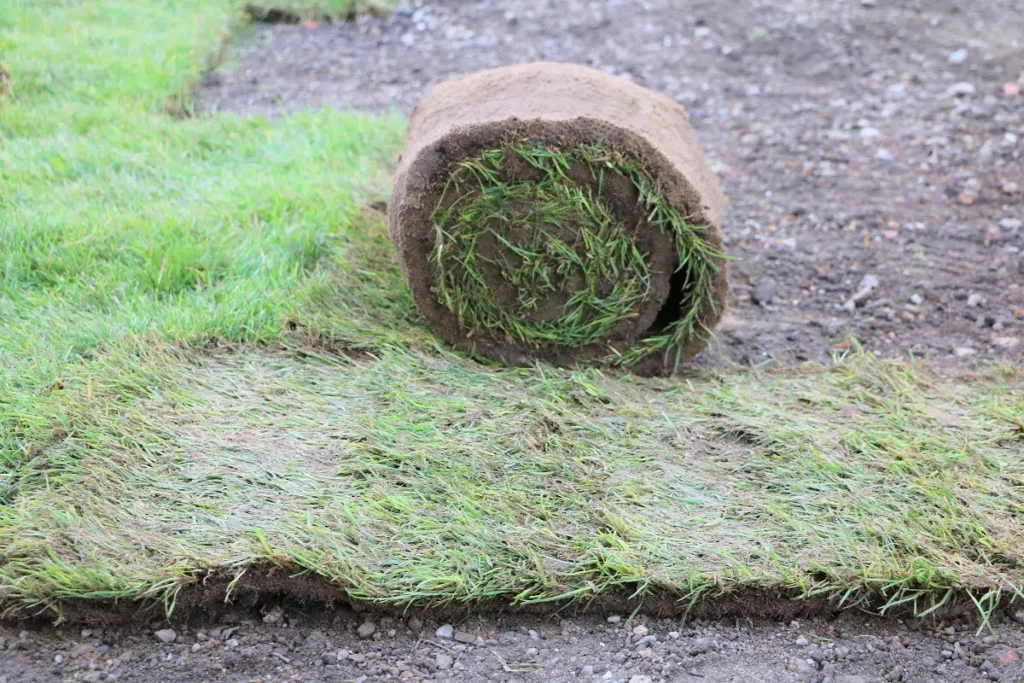If you analyze your garden soil correctly and improve it accordingly in a targeted manner, gardener’s happiness is assured! In this article, we will show you how to correctly determine your garden soil in the soil analysis, help you interpret the soil analysis and give you practical help to improve your garden soil.
For success in the garden you need to know your soil. Then you will know in advance which plants will thrive in your garden and which ones are not worth planting. You’ll also save money if you fertilize less, but in a more targeted way. Soil composition, pH and nutrient content are among the key variables in soil analysis. We show you how to determine them.
Contents
- 1 Determine the soil type in a self-test
- 2 Soil analysis with the sludge sample
- 3 Have a professional soil analysis done
- 4 Taking a soil sample correctly
- 5 When to do a soil analysis?
- 6 What are the different soil analyses?
- 7 Interpret soil analysis results correctly
- 8 Pollutants in the soil – what now?
- 9 Improving garden soil: This is how you proceed specifically
- 10 Change the composition of the soil
- 11 Mineral or organic fertilizer?
- 12 Improve humus soil with compost
- 13 Buying garden soil: What does it depend on?
- 14 Author
Determine the soil type in a self-test
For the first analysis, all you need are your hands, with which you can feel the soil type. To do this, pick up some soil from a bed. Work the soil with your hands. Decide which of the three types described below it most closely corresponds to:
- Light soil: If the soil does not hold together when kneaded but trickles between your fingers, it is light soil, consisting largely of sand. This can also be recognized by the grains that can be felt when rubbing between the fingers. Sandy soils are easy to work with a spade and digging fork. They contain a lot of air and can warm up quickly in the spring. However, their ability to hold water and nutrients is poor.
- Heavy soil: roll the soil between the palms of your hands. If it feels a bit fat, forming easily malleable sausages, the soil contains a lot of clay. This is a great way to store water and nutrients. The other side of the coin: clay soil often allows little air to the roots, compacts quickly and is difficult to work.
- If the soil can be shaped, but cracks form in the process, it is a soil type that lies between clay and sandy soils. As always with the golden mean, it is ideal for most plants because of the balance of water, air and nutrients.
- Of course, there are all kinds of transitions between these three soil types. In addition, the finger test says nothing about the organic matter content, which is, however, of great importance for the structure and fertility of the soil. If you want to know a little more, go for experiment number two: the slurry sample.
Soil analysis with the sludge sample
For a slurry sample, you will need a larger jar, ideally with a screw-on lid and a wide opening, a tablespoon and some water. Fill garden soil as well as water into the jars and shake vigorously.
Although the result looks quite cloudy at first glance, it will give you more clarity about your soil type. This is because slurrying in water separates the different components of the soil.
Depending on their size and weight, the particles sink at different rates and settle in layers at the bottom of the glass. Some also float to the surface of the water. Depending on the thickness of the layers, you can see the relationship between the components.
Coarser sand grains are deposited in the lowest layer after only a few minutes
Dusty clay particles remain in the solution for a long time
Clay colors the water rather reddish
Humus colors the water almost black (the darker the water, the more humus in the soil)
Undecomposed plant parts float to the top in the slurry sample
How to measure the pH value in the soil
With a pH self-test from the garden center (e.g. Neudorff) you can quickly find out whether the soil is acidic or alkaline. Here’s how: Take the soil sample from the correct soil layer (5 to 10 cm depth for lawns, 20 to 30 cm in vegetable gardens). Put some of the soil in the glass tube and pour it with distilled water. Now add the tablet and shake the closed tube until it dissolves. Once the sediments have settled, determine the result by comparing the color of the liquid with the color scale on the package.
Have a professional soil analysis done
A professional soil analysis from the lab will give you a good idea of the current nutrient and mineral content of your soil. This investment will quickly pay for itself: In addition to the current nutrient levels, you will receive a fertilizer recommendation. Often you will save money on the next fertilization, because the supply of phosphate or potassium in the soil is often already quite sufficient. The information from the soil analysis will last you for the next five to six years. Only then is a new analysis due.
Taking a soil sample correctly
Whether it is a vegetable or strawberry bed, berry bushes, lawn, fruit meadow, cold frame, ornamental garden or conifers: You need a separate sample for each garden area that you want to have analyzed. This should also consist of at least ten punctures distributed as evenly as possible over the relevant area, which you mix well together. The more punctures you make, the more accurate the result will be. Take the samples very carefully – this is where the biggest source of error lurks.
You can also obtain detailed instructions for sampling from the analysis laboratory on request. Take sufficient soil material (usually at least 300g) from the well-mixed soil sample and put it in a well-sealable bag. Do not forget: Always label the soil sample exactly with the place of sampling and date.
When to do a soil analysis?
Our recommendation: Send in your samples for analysis as early as November! Theoretically, you could wait until spring. But then the laboratories are in high season. In late fall, on the other hand, the soil is neither freshly fertilized nor does the nutrient content change in any significant way over the winter. And you get your results quickly and can plan the next fertilization phase in peace. However, if you send in your soil sample in the summer, be sure to allow 3 to 4 weeks for the lab to send you your results.
What are the different soil analyses?
Almost all soil analyses primarily determine the nutrient content of the soil. We test how high the proportion of organic carbon is, because this indicates how rich in humus a soil is. The supply of phosphorus and potassium is also checked.
In addition to general soil analyses, there are also special analyses that are specifically designed for a particular purpose. For example, a lawn soil analysis also determines the content of molybdenum and nitrogen.
Special case nitrogen: Nitrogen is not recorded in most analyses for home gardens. Its content changes constantly depending on temperature, humidity and aeration of the soil as well as leaching after rain. The content of mineralized nitrogen in particular (this is readily taken up by plants) can only be approximated in a soil analysis because it volatilizes quickly. If the analysis cannot be carried out immediately after taking the sample, the sample must be sent to the laboratory cooled and moist if possible.
In addition to nutrient content, you can also have the soil tested for contaminants. This is interesting for vegetable gardens and families with small children, who can easily ingest soil particles. Pollutants are not only a problem of former industrial sites or mining areas – heavy metals can also accumulate in the soil near roads. Tests are carried out in the laboratory for heavy metals that are readily available to plants and can accumulate in them. Such analysis tests are also available for water bodies or contaminated sites. A comprehensive range of different soil analyses can be found, for example, at the Soil Analysis Center.
Interpret soil analysis results correctly
pH: The pH indicates whether a soil is neutral (pH around 7), acidic (less than 7), or more alkaline (above 7). Garden soil should have a pH between 5.5 and 7.2. However, depending on the composition (sand, clay or loam), each soil always has a specific ideal pH:
- Sandy soil: 5.3-5.7
- sandy loam: 6,3-6,7
- clayey loam: 6,9
- peaty soil: 3,8-4,3
If a soil is too acidic or alkaline (for example, sandy loam with a pH below 6), nutrients are less easily absorbed by plants. Thus, deficiencies can occur despite sufficient nutrients in the soil.
Organic carbon (C org.) / humus content: Organically bound carbon (C org.) is found in soil organisms, dead plants and animals and in humus. From the amount of organic carbon in the soil, one can draw conclusions about humus content, fertility and nutrient availability. If the amount of organic carbon in the soil is very high, there is a good basis for an adequate supply of nutrients.
C/N ratio: For a good nutrient supply, the ratio of organic carbon to nitrogen must be correct. The ratio of carbon to nitrogen (C/N) should be in the range of 8/1 to a maximum of 20/1.
Phosphorus content (P2O5): Phosphorus is an essential component for plants and is needed for many different functions. Among other things, phosphorus plays a major role in DNA, energy balance and as messenger substances. Phosphate deficiency limits plant growth and plants then react with increased root growth.
Potassium (K2O): Potassium is also an essential element required by organisms for metabolism. Potassium deficiency results in growth disorders and necrosis of the leaf edges. Caution: Too high a potassium concentration also damages plants, since an excess of potassium prevents the uptake of magnesium and calcium, for example. Potassium is usually sufficiently available in garden soils in Europe. Therefore, only the amount of potassium that is lost through harvesting should be re-fertilized with a maintenance fertilization.
Magnesium (MgO): Magnesium content is highly dependent on the geological parent material, with sandy soils usually containing little magnesium. Characteristic of magnesium deficiency are paling of the oldest leaves and leaves dying from the leaf tip. However, the uptake of magnesium may be reduced by an excess of other minerals such as potassium, calcium and manganese.
Trace elements such as boron, copper, manganese, iron, zinc, molybdenum, while playing a major role in plant development, are only needed in very small amounts. Fertilizers should only be added if there is a specific deficiency, because often an oversupply also has negative effects on the plants.
Special case iron: Iron is important for the formation of chlorophyll, as well as the formation of carbohydrates and proteins. Iron is usually sufficiently present in soils, and a deficiency often only results from reduced availability. This can be caused on the one hand by a too high pH-value or by a too high concentration of calcium and magnesium carbonate-rich soils.
Most often, however, iron deficiency is the fault of the use of hard water for watering (tap water containing lime), which inhibits the absorption of iron. This can be prevented by using only softened water (rainwater is best). Acute deficiency can be corrected by giving iron in the form of Fe-EDDHA (a Cheleat).
Pollutants such as lead, cadmium, chromium, nickel, mercury belong to the toxic heavy metals and cause metabolic disorders in humans and animals. Plants absorb heavy metals to some extent, this is relevant when they are consumed. A concrete analysis of the soil for the pollutant found can provide more precise information about the content.
Pollutants in the soil – what now?
If pollutants have been detected in the soil, there are a few tricks you can use to minimize their uptake. This starts with selecting suitable plants. Not all vegetable plants absorb pollutants equally well: Strawberries or radishes, for example, are known to accumulate lead particularly strongly. Tomatoes or zucchini, on the other hand, are less contaminated.
Proper soil care also plays a role: a pH value of 7 and a sufficiently high humus content reduce the uptake of heavy metals by plants. Parts of plants close to the ground, roots and leaves should be thoroughly washed or removed before consumption. If you also cover the soil with straw or mulch, you prevent soil particles from being deposited on the plants. Near roads, foil tunnels protect against pollutants from the air and precipitation.
Tip: Leafy and root vegetables accumulate many pollutants such as lead or cadmium. In tree and bush fruit, the pollution is usually barely measurable. So instead of kohlrabi and carrots, plant grapes or sour cherries.
Improving garden soil: This is how you proceed specifically
The soil is too acidic: If the pH is too low, you can increase it with mixed or garden lime.
The soil is too alkaline: If the pH is too high, it can be lowered with acidifying fertilizer made from needle compost. The pH can also be lowered with humus soil.
pH ideal: If the soil has reached the ideal pH, a maintenance liming should be carried out every two years. This counteracts the natural acidification of the soil. The right time to lime the lawn is spring as well as fall: if garden lime is raked in superficially, it will already be broken down somewhat by the following spring.
Change the composition of the soil
Sandy soil: In light and sandy soils, clay minerals such as betonite help to increase the storage capacity of water and nutrients. For this, 100 to a maximum of 300 g/sq. m. is recommended.
Clay soil: To make clay soil loose and permeable, add coarse rock flour and sand. They provide better aeration and make the soil more permeable to water and, of course, to plant roots.
Combating nutrient deficiencies in the soil
Once the nutrient status of the garden soil has been determined, the soil can be specifically supplied with the missing nutrients and trace elements. Complete fertilizers are unsuitable for this purpose because they cover all nutrients and thus quickly lead to overfertilization – with negative effects on plants and soil water. It is better to use special fertilizers that contain only the substances that are missing in each case.
Fertilize correctly: How much and when you should fertilize in the garden depends on the plant itself, its type of use and the form of fertilizer. Clearly, plants need nutrients. But when? Keep track with this fertilizer calendar!
Mineral or organic fertilizer?
Mineral fertilizer is immediately available to plants. In sandy soils, however, it can be washed out quickly. Therefore, it should be applied here only in small quantities, but more frequently. In contrast, organic fertilizer such as horn meal must first be broken down by soil organisms, but then it holds up well even in light soils. Horn meal and shavings are made from the horns and hooves of cattle. It is ideal for the garden because it contains mainly nitrogen and only a small amount of phosphate and potassium.
Improve humus soil with compost
Organic components are crucial for soil fertility. In the uppermost 10 to 30 cm, they are converted by soil organisms into humus, which can then in turn be absorbed by plants in the form of nutrients. If you want to increase the humus content of the soil, it is best to use compost. After all, plant waste that accumulates in the garden and in the kitchen anyway is converted into a valuable soil improver on its way through the compost.
Of course, you can also use purchased compost, for example, from bark, in this sense. The compost is added to the soil by mixing one or two handfuls of well-rotted material into the excavation when planting the plants. Further, every year in March and April, 2 to 3 kilograms per square meter of mature compost is worked into the top 15 cm of soil. In the case of humus-poor and light soils, it may be up to 10 kg. A year-round mulch cover of half-rotted compost material does the rest to permanently improve the humus content and thus the soil structure and fertility.
Read about how to properly create a compost system and eight tips for good compost here.
In addition to nutrients in the soil, proper irrigation is also critical to garden success.
Buying garden soil: What does it depend on?
For flower boxes, houseplants or raised beds, your own garden soil is often not enough. Even if the soil in your own garden is contaminated with pollutants, it is better to use potting soil from the garden center or hardware store. This soil is specially adapted to certain plants. Potting soil or plant humus from the garden center is always a mixture of different components, which then create ideal conditions for the respective plant type in the sum.
Aeration, water retention, structural stability and nutrient storage play an important role. In peat-free soils, one mixes green waste compost, bark humus, clay minerals, wood fibers and coconut fibers. Green waste compost serves as a nutrient supplier, while wood and coconut fibers ensure good aeration and improve the stability of the substrate. Clay minerals, in turn, improve nutrient retention and release as well as water retention. The pH value and fertilizer are also already adjusted to the plants in purchased potting soil.
For example, growing soil contains little fertilizer, while tomato soil contains a lot. The majority of soil sold in garden centers and hardware stores contains peat. Peat is a finite raw material, and sensitive ecosystems are destroyed during extraction. Therefore, the use of peat in private gardens can hardly be justified. So when buying, look for completely peat-free soils if possible. To ensure that they are peat-free and not just “organic” or “peat-reduced”, the packaging must say “peat-free” or “without peat”.

